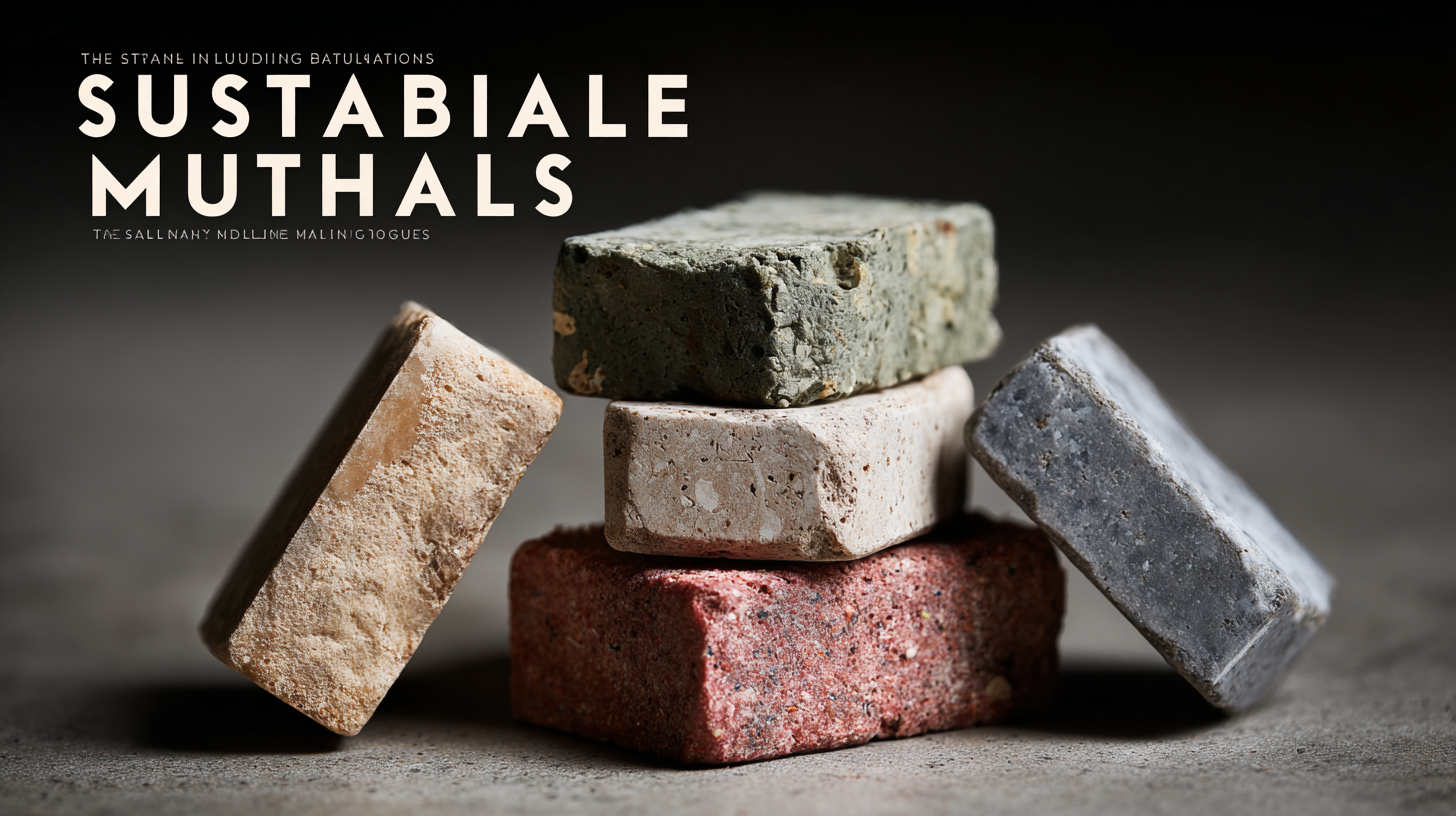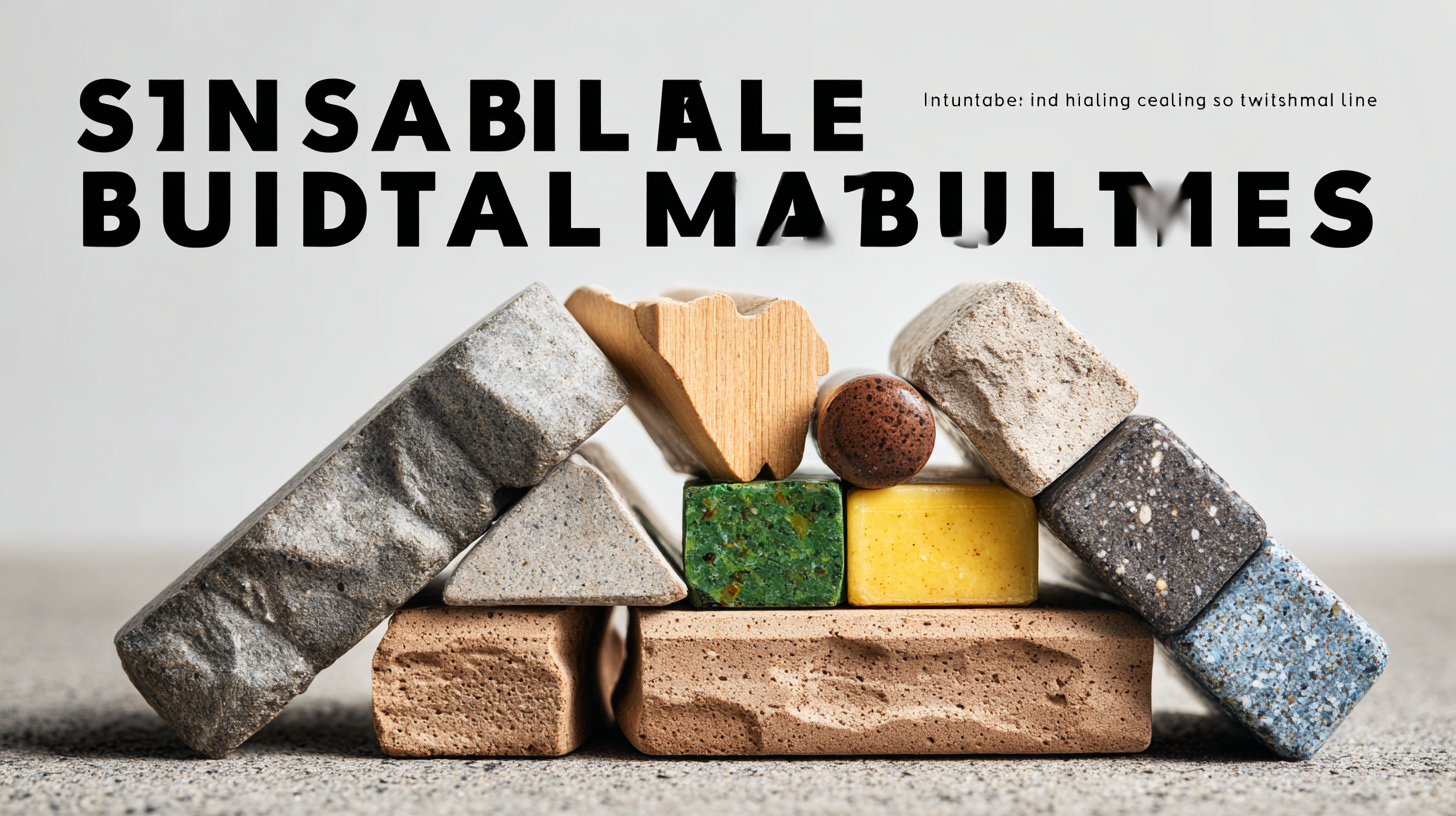Natural beauty for your favorite space
Trending Sustainable Building Materials for Homes in 2025 A Comprehensive Comparison Guide
As the world increasingly prioritizes environmental responsibility, the demand for Sustainable Building Materials for Homes has seen a significant rise, with the global market projected to reach $645 billion by 2025, according to a report by Research and Markets. This surge is fueled by growing awareness of climate change and the construction sector's substantial contribution to carbon emissions, accounting for nearly 39% of energy-related CO2 emissions worldwide, as noted by the United Nations Environment Programme. In response, homeowners and builders are seeking alternative materials that not only minimize ecological impact but also enhance energy efficiency and indoor air quality. This comprehensive comparison guide highlights the trending sustainable materials set to transform residential construction in 2025, offering insights into their benefits, costs, and practical applications for environmentally conscious living.

Innovative Eco-Friendly Materials for Modern Home Construction
As we move towards 2025, the construction industry is witnessing a significant shift towards innovative eco-friendly materials that not only enhance the aesthetic appeal of modern homes but also minimize environmental impact. One standout material gaining popularity is bamboo. Renowned for its rapid growth and durability, bamboo serves as an excellent alternative to traditional hardwoods, providing a sustainable option for flooring, cabinetry, and even structural elements. Its natural strength and flexibility make it an ideal choice for various architectural designs, appealing to environmentally-conscious homeowners looking for sustainable solutions.
Another emerging material is hemp-based concrete, which combines hemp fibers with traditional concrete to create a lighter, more energy-efficient building solution. This novel material not only reduces carbon emissions during production but also improves insulation properties, leading to lower energy costs over time. Furthermore, hemp’s natural resistance to mold and pests enhances the longevity of structures, positioning it as a desirable choice for modern home construction. By integrating such innovative materials, homeowners can significantly reduce their carbon footprint while embracing a stylish and contemporary aesthetic in their living spaces.
Trending Sustainable Building Materials for Homes in 2025
Comparative Analysis of Natural vs. Recycled Building Materials
When considering sustainable building materials for homes in 2025, a crucial decision lies in choosing between natural and recycled materials.
 Natural materials, such as bamboo and reclaimed wood, offer unique aesthetics and lower environmental impact. According to the U.S. Green Building Council, building with natural materials can lead to a 50% reduction in carbon emissions compared to conventional building practices. These materials not only contribute to sustainability but also provide better indoor air quality, enhancing the overall living experience.
Natural materials, such as bamboo and reclaimed wood, offer unique aesthetics and lower environmental impact. According to the U.S. Green Building Council, building with natural materials can lead to a 50% reduction in carbon emissions compared to conventional building practices. These materials not only contribute to sustainability but also provide better indoor air quality, enhancing the overall living experience.
In contrast, recycled building materials, like reclaimed metals and plastic composites, are rapidly gaining traction due to their resource efficiency. A report from the Environmental Protection Agency indicates that using recycled content in building products can divert nearly 75 million tons of waste from landfills annually—a significant contribution to sustainability. Moreover, these materials often boast comparable durability and strength to new products, making them a practical choice for modern construction.
Tips: When selecting between natural and recycled materials, prioritize your local climate conditions and building codes to maximize performance. Additionally, seek certified suppliers who provide transparency in sourcing and production practices to ensure your choices align with your sustainability goals. Lastly, consider combining both types of materials in your design for optimal ecological and aesthetic benefits.
Energy-Efficient Design: Materials That Reduce Carbon Footprint
As we move towards 2025, the construction industry is increasingly focused on sustainability, particularly in energy-efficient design. One of the key ways to reduce the carbon footprint of homes is through the selection of sustainable building materials. According to a report by the International Energy Agency (IEA), buildings account for approximately 36% of global energy use and nearly 40% of CO2 emissions. Selecting materials that are not only environmentally friendly but also energy-efficient can significantly mitigate this impact.
Materials such as cross-laminated timber (CLT) are gaining traction for their low carbon emissions and high thermal efficiency. A study from the Forest Stewardship Council indicates that using CLT can reduce greenhouse gas emissions by up to 75% compared to traditional concrete. Additionally, innovations in recycled steel and eco-friendly insulation materials contribute to energy efficiency by minimizing thermal bridging and improving overall building performance. The U.S. Green Building Council reports that homes built with these materials can achieve a 30% reduction in energy costs, showcasing the financial benefits alongside environmental ones.
Embracing these sustainable materials not only aligns with regulatory trends, such as the European Union's Green Deal, but also resonates with a growing consumer demand for eco-conscious living. By prioritizing energy-efficient design in the selection of building materials, homeowners and builders can contribute to a sustainable future while reaping the benefits of reduced energy consumption and enhanced comfort.
Trending Sustainable Building Materials for Homes in 2025
| Material | Description | Carbon Footprint Reduction (%) | Energy Efficiency Rating | Recyclability |
|---|---|---|---|---|
| Bamboo | Fast-growing plant used for flooring and structural applications. | 50% | A+ | Yes |
| Recycled Steel | Durable and strong material ideal for framing. | 70% | A | Yes |
| Hempcrete | Lightweight, insulating material made from hemp fibers. | 35% | B | Yes |
| Reclaimed Wood | Wood salvaged from old buildings, offering character and sustainability. | 40% | A- | Yes |
| Straw Bales | Natural, insulating material used in wall construction. | 55% | A+ | Yes |
Cost-Effectiveness of Sustainable Building Materials: A Financial Overview
As the demand for sustainable building materials grows, homeowners and builders are increasingly interested in understanding their financial implications. Cost-effectiveness is a significant factor that influences the adoption of eco-friendly materials in construction.
While sustainable options like reclaimed wood, bamboo, and recycled steel may have higher upfront costs compared to traditional materials, they often translate to long-term savings through energy efficiency and reduced maintenance. For instance, homes built with insulated concrete forms or energy-efficient windows can significantly lower energy bills, offsetting the initial investment over time.
Moreover, the financial benefits of sustainable building extend beyond mere savings on utility bills. Many regions offer tax incentives, rebates, and grants for the use of green materials, which can further decrease the overall cost of construction. Additionally, as sustainability becomes a priority, the resale value of eco-friendly homes tends to increase, making them a smart investment for homeowners. Understanding these financial aspects is crucial for those contemplating building their dream home with sustainable materials in 2025 and beyond.
Future Trends: Anticipating the Next Wave of Green Building Products
As we look towards 2025, the sustainable building materials market is set to witness transformative changes. With the U.S. air filter market expected to grow from $4.62 billion in 2025 to $7.44 billion by 2032, driven by a compound annual growth rate (CAGR) of 7.1%, the emphasis on air quality in green buildings is becoming paramount.  Eco-roofs and environmentally friendly construction are on the rise, reflecting a broader trend towards ecological awareness in the building sector. This surge in interest is not only promoting eco-friendly practices but is also creating a burgeoning job market, positioning green jobs as the second-fastest growing sector after the energy industry over the coming decades.
Eco-roofs and environmentally friendly construction are on the rise, reflecting a broader trend towards ecological awareness in the building sector. This surge in interest is not only promoting eco-friendly practices but is also creating a burgeoning job market, positioning green jobs as the second-fastest growing sector after the energy industry over the coming decades.
Simultaneously, the architectural decoration and design industry in China is showing a steady growth trajectory, with a notable 26% increase in output value from 2019 to 2023. The industry is evolving with a focus on digitalization, smart technology, and ecological design, underscoring a commitment to human-centered approaches in construction. These trends demonstrate a clear shift in consumer preferences towards sustainable options, paving the way for innovative materials and construction practices that prioritize efficiency and environmental responsibility. In this dynamic landscape, high-performance membrane materials are surfacing as a critical component, propelled by industry integration and technological advancements that promise to redefine standards in sustainable building design.
